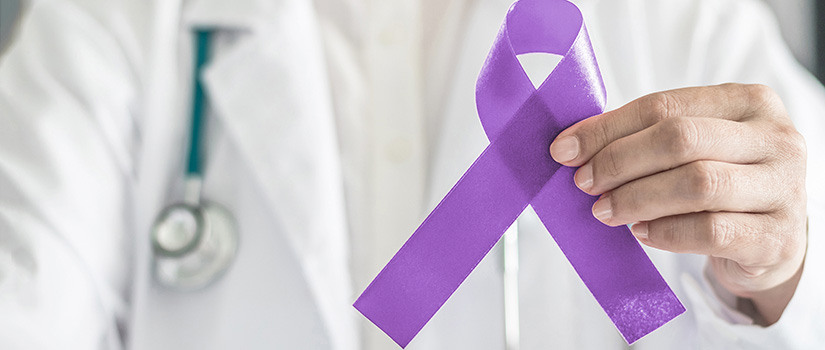February is National Cancer Prevention Awareness month. Held annually every February, the initiative aims to raise awareness about cancer and spread awareness about the importance of early detection, which is paramount to its prevention. A College of Nursing alumna shares her role in lung cancer screening.
Carolina Hewitt (’16 BSN, ’19 MSN)
How I became involved in lung cancer work
Prior to nurse practitioner school, I was a registered nurse in the heart and vascular unit. It was here that I learned how integrated pulmonary medicine was into the basis of critical care. Once I finished nurse practitioner school and saw an opening in the pulmonary field, I decided to take that opportunity to learn more. I do not think I understood the depth of pulmonary medicine until practicing for a few years. I work at McLeod Regional Medical Center in pulmonary critical care medicine where there is a strong lung cancer screening program developed over the past few years. With an increase in lung screenings, we have had a higher patient load focused on lung cancer due to earlier diagnosis.
Why is this work important?
Medicine has always been something I held strong in my heart. I believe God gives everyone a talent and passion, and it is our job to help as many people as we can with it. Medicine incorporates people's lives and their livelihood. If someone does not feel well, their livelihood is disrupted. I look at lung screening like time traveling. There is a chance to find something earlier and prevent the crippling repercussions of stage IV cancer destroying someone's life. This is such an amazing opportunity to treat patients sooner. Using CT lung screenings allow us to identify 1 to 2 mm nodules and allows us to follow and track their size and interval development.
From this program we also started a tobacco cessation program in which we work with patients individually on smoking cessation with the use of nicotine replacement therapy options. We took the basis of education from the Mayo Clinic course and developed it into the practice here in South Carolina. It is a privilege to be able to work with patients one-on-one and find therapy options available to them that would be beneficial when it comes to reduction of cigarette use.
Describe the screening program
There are two parts of our screening program. We have the incidental nodule program as well as the CT lung screening program. McLeod Hospital is made up of several locations within the PeeDee. We use a program that will take certain keywords and filter through to provide us with incidental nodules found on CT scans performed for various other reasons. For instance, a patient might report to the emergency room after having a car accident. They have a CT of the chest without contrast performed and a nodule is found measuring 12 mm with no history of smoking. Then, a pulmonary consultation could be placed to determine if this was concerning for cancer.
The other part of the program includes CT lung cancer screening. This program has evolved over the past seven years as we now have nurse navigators working with physicians to incorporate better care for patients. A low-dose CT scan is a scan that can detect small, early stage, potentially curable lung tumors. Results of a trial with more than 53,000 former active smokers show that a low-dose CT of the chest was better than an x-ray for detecting early lung cancer. Screening guidelines include ages 50 to 80 years old who have a 20 or more pack per year smoking history and have quit within the last 15 years or currently smoking. Typically, no symptoms are present at the time of screening. The goal of early lung cancer detection is to have patients treated minimally with surgery and few radiation treatments if diagnosed with lung cancer. When lung cancer is diagnosed in its early stage, patients have a five-year survival rate of 56% after treatment. Approximately 90% or more of all lung cancers are caused by cigarette smoking according to the CDC. The risk of developing lung cancer for current smokers with a history of smoking a pack a day for about 40 years is 20 times higher than that of a non-smoker.
Typically, my role at the clinic involves patient screenings if eligible. If nodules are present, we follow, however if they need to be acted upon we work closely with oncology, radiation oncology, pathology, radiology and CT surgery. One of the benefits to the hospital is having the opportunity to discuss patient cases via a tumor board, as well as a multidisciplinary clinic. Tumor board meets weekly where we discuss cases with the above listed providers, along with new evidence-based practice materials. In multidisciplinary clinic, there is an advantage as patients can choose to participate with meeting and discussion of their case so questions can be answered accordingly, and patients can hear from all disciplinaries within the same meeting at one time rather than having to go to multiple appointments once a pulmonary nodule is found.
Program Impacts on patients
This program has a huge impact on patient lives since early lung cancer detection can prevent them from experiencing chemotherapy or radiation. Also, it may be helpful in preventing stage IV cancer. As mentioned earlier, the incidental lung nodule program is helpful as a patient without a smoking history may not routinely be scanned. However, if nodules are found, further testing can be brought in early and management can be performed. Patients are usually open to enrolling in the CT lung screening program. This often leads to progression into participation of the smoking cessation program, which patients have an increased likelihood after quitting smoking.
